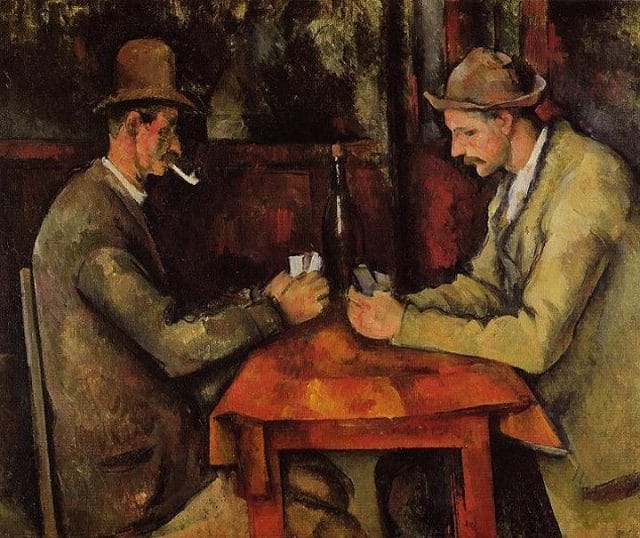How can people invest in art when taste is subjective and inconstant? The answer, according to economist Allison Schrager, is that art galleries manipulate the hell out of prices. She writes:
The nature of art as a commodity inherently makes efficient prices, meaning prices that reflect all available information about value, impossible. Value is subjective; the intrinsic value of a painting is paint and canvas—beyond that value is often a matter of taste. This is why the industry has developed an intricate signaling process where the approval of a handful of galleries, collectors and museums, determines what is good and valuable.
For aspiring artists, galleries act as their brand managers and retailers simultaneously. While they, like any art collector, museum curator, or ordinary human being, have their own idea of what makes great or beautiful art, they recognize that the price of an artist’s work is its value, and go to great lengths to control the price. Schrager writes:
Control over the market is so important to galleries that they won’t sell to collectors who will flip the art in the secondary market. Art on the secondary market is often sold at an auction house. Once an artist’s work goes to auction the prices are observable to the public, and anyone (often uttered with disdain) can buy it. It is not uncommon for gallery owners to bid on their artists work at the auction in order to control the market price.
Galleries need to strike a careful balance when setting prices. Too low a price indicates that a piece is of low quality. But if the gallery sets the price so high that no one buys, the artist will be seen as “over-hyped.” In the fine art world, any sign of normal economics at work is toxic. Schrager explains that the price cannot be lowered. Galleries will simply drop artists whose work does not sell.
Exceptions are made for prominent museums and high-profile collectors. Since they bolster the value of art through the act of purchasing it, galleries offer them exclusive early access to works of art and discounted prices.
The art world enforces these price manipulation practices strictly, as shown in the following anecdote:
A few years ago a young art collector from New York I know bought a painting from a New York gallery. A few weeks later she went to the Miami Basel art fair where a celebrity heard about the painting. He offered to buy it for more than 50 times what she paid for it. She refused and he raised his offer to a sum that would mean she’d never have to work again. She explained that she would not bargain with him—any resale of the painting must go through the gallery, so they’ll get a commission and select the price—not her. The young collector knew there would be consequences to making the sale. She may have owned the painting, but reselling it at a profit without the gallery’s permission would blackball her from the art industry. To her, that was not worth the millions she was offered.
While art dealers often describe these practices as protecting the artist, art dealers admit that “sometimes you can get an equally attractive work on the street, for a fraction of the price, but you miss the investment value and social prestige of building a collection.” Or, in other words, galleries’ price manipulation is semi-arbitrarily creating powerful brands out of the artists they back in order to bring stability and predictability to a profitable market.
This post was written by Alex Mayyasi. Follow him on Twitter here or Google Plus. To get occasional notifications when we write blog posts, sign up for our email list.




